What's New
Displaying results 1471 - 1480 of 4052
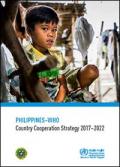
Resource | Publications,
The The Philippines–WHO Country Cooperation Strategy 2017–2022 spells out the country's shared vision for health: All for health towards health for all. This is the vision of the Philippine Health Agenda 2016–2022, with which this strategy is closely aligned.
The Philippines has made significant investments and advances in health in recent years. Rapid economic growth and strong country capacity have contributed to Filipinos living longer and healthier. However, all the benefits of this growth have not reached the most vulnerable groups, and the health system remains fragmented.
In the international arena, the Philippines has been an active Member State of WHO, and is the home of the WHO Regional Office for the Western Pacific. The country has played a critical role in shaping development agendas, including the Sustainable Development Goals (SDGs). In the spirit of the SDGs, this country cooperation strategy focuses on leaving no one behind and enhancing collaboration for health to move the Philippines closer to universal health coverage. The work of WHO and the Department of Health will focus on five strategic priorities: saving lives, promoting well-being, protecting health, optimizing the health architecture and using platforms for health.
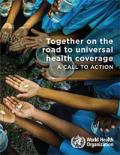
Resource | Publications,
Universal Health Coverage (UHC) is central to achieving better health and well-being for all people at all ages. It delivers disease prevention, health promotion, and treatment for communicable and noncommunicable diseases alike, while ensuring that individuals are not driven into poverty because of high costs.
UHC is not an end in itself: its goal is to improve the chances of every person attaining the highest level of health and well-being and contributing to socioeconomic and sustainable development. Attaining UHC is thus essential to every nation’s economic productivity, health security, social stability – and to every individual’s well-being, security, and productivity.
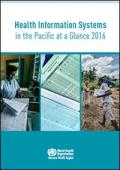
Resource | Publications,
This report provides a 2016 snapshot of the status of national health information systems (HIS) in the Pacific. The Meeting on Strengthening Health Information Systems in the Pacific organized by the Pacific Health Information Network (PHIN), the Pacific Community (SPC) and the World Health Organization (WHO) was held in Nadi, Fiji, in May 2016. It was a timely meeting as the heads of health had ratified the Healthy Islands Monitoring Framework in April 2016, leaving HIS professionals to work out the mechanisms by which the indicators would be collected and reported. The PHIN meeting provided an opportunity for countries to reflect on some of the challenges and opportunities for strengthening HIS, with the end goal of being able to monitor accurately and report on the health of their nations.
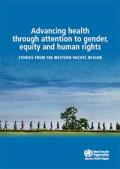
Resource | Publications,
To successfully advance health through attention to gender, equity and human rights, an organization must also transform its culture from within. One critical step towards doing this is to identify strategic entry points, based on lessons learnt from examples of success or promising practices. Accordingly, the Technical Working Group identified as one of its major activities in 2016 the development of a report illustrating such examples, through a reflective and interactive cross-divisional process. WHO staff at the Regional Office and in country offices were engaged in an internal reflection process to identify and develop examples. This report does not provide an exhaustive list of these examples and discussions, but rather represents snapshots across various health topics and programmes and across different functions of WHO in the Western Pacific Region.
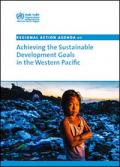
Resource | Publications,
Member States achieved significant successes with the MDGs, but the gains did not equitably benefit all groups in society. The gains under the MDGs were realized in a large part due to programmatic approaches focused on specific disease and health issues.
This Regional Action Agenda on Achieving the Sustainable Development Goals in the Western Pacific aims to guide Member States as they embark on SDG implementation. Much progress has already been achieved. Member States can rely on information systems, reporting and coordination arrangements, and policies and programmes that are already in place. Achieving the SDGs also involves significantly new ways of working that go beyond business as usual – and newer roles and capabilities for the health sector in working across government and stakeholders. The action agenda suggests practical actions to achieve the change in mindset that is needed.
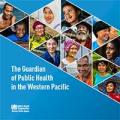
Resource | Publications,
Health outcomes across the Region have improved in recent decades, but serious challenges remain. More than 30,000 people die each day due to preventable chronic diseases. In many countries, childbirth remains a danger to both mother and child, and more than 4 million babies die each year before they reach 1 month. Established and emerging infectious diseases from tuberculosis to Zika virus disease pose real threats.
The Regional Office for the Western Pacific is squarely focused on responding to the specific needs and challenges of countries in the Region. It facilitates the sharing of knowledge among countries and serves as a hub for collaborative work. It helps translate global health initiatives into regional action plans.
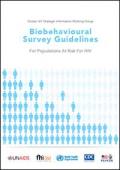
Resource | Guidelines,
To address a public health problem, you first have to measure it accurately. Biobehavioural surveys have proven to be invaluable tools for measuring and addressing HIV, which remains the world’s biggest public health challenge. This current iteration of the Biobehavioural survey guidelines is a welcome addition to the list of useful documents targeting those who plan to conduct biobehavioural surveys of HIV and HIV-risk behaviours in their countries.
The guidelines fill a gap in providing tools for surveying HIV prevalence in key populations, and the included questionnaires may also inform general population surveys.
Currently, many researchers undertake surveys using country-specific indicators. These guidelines standardize the conduct of biobehavioural surveys to permit comparisons between as well as within countries over time.
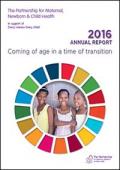
Resource | Publications,
The 2016 Annual Report sets out the key achievements of the Partnership in the first year of implementing its new Strategic Plan 2016-2020. The report highlights key moments, including the work of the Adolescent & Youth Constituency, the Partnership’s role in operationalizing the Unified Accountability Framework and extensive work done in 2016 to raise the profile of sexual, reproductive, maternal, newborn, child and adolescent health (SRMNCAH) in broader global health and development agendas. The partner-centric approach is evident throughout and the achievements documented are a testament to the power of partnership.
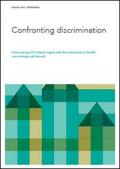
Resource | Publications,
This report compiles the latest body of evidence on how stigma and discrimination create barriers across the HIV prevention, testing and treatment cascades and reduce the impact of the AIDS response. The report also brings together best practices on confronting stigma and discrimination, providing a valuable resource for programme managers, policy-makers, health-care providers and communities. The evidence shows that the establishment of people-centred service delivery models, supportive legal and policy frameworks, monitoring and enforcement mechanisms, and sensitization training for health-care workers and other duty bearers can promote inclusion and increase access to services.
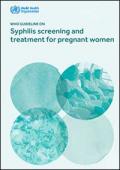
Resource | Guidelines,
Since the publication of the WHO Guidelines for the management of sexually transmitted infections in 2003, changes in the epidemiology of STIs and advancements in prevention, diagnosis and treatment necessitate changes in STI management.
This guideline provides updated recommendations for syphilis screening and treatment for pregnant women based on the most recent evidence and available serologic tests for syphilis.





